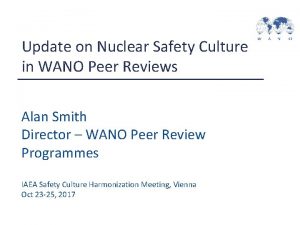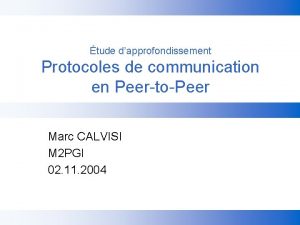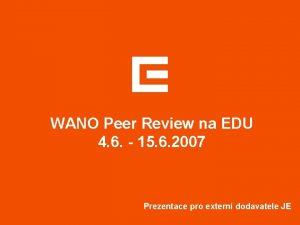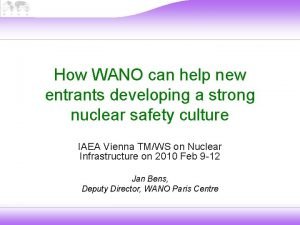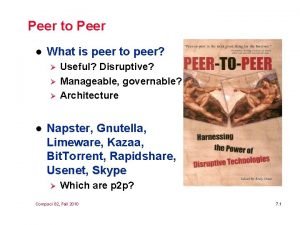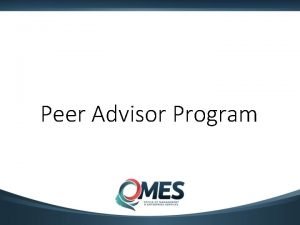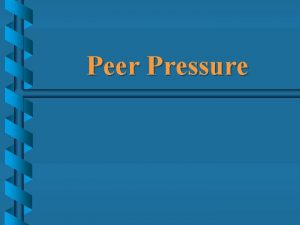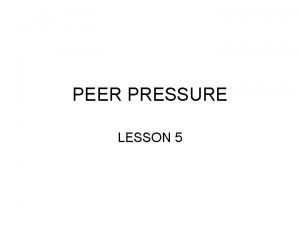Update on Nuclear Safety Culture in WANO Peer








- Slides: 8

Update on Nuclear Safety Culture in WANO Peer Reviews Alan Smith Director – WANO Peer Review Programmes IAEA Safety Culture Harmonization Meeting, Vienna Oct 23 -25, 2017

Nuclear Safety Culture Timeline The term “Safety Culture” came into common use after the accident at Chernobyl. Davis Besse event (2002) showed that nuclear safety needed to be “the overriding priority”, but no clear standard for what that meant In 2004, INPO developed 8 Principles for Excellence in Nuclear Safety Culture. In 2006, WANO develops Principles for NSC Excellence. WANO develops their own version shortly thereafter. In 2011, INPO, WANO, and US Nuclear Regulatory Commission agree on 10 Nuclear Safety Culture Traits. WANO PL 2013 -1 becomes the standard for reviewing nuclear operators. In 2015, joint IAEA-WANO efforts begin to identify common safety culture themes, applicable to a broader range of nuclear stakeholders, using terms that are easier to apply (language)

Traits of a healthy nuclear safety culture Ten Traits Broken into Three Aspects Individual commitment to safety 1 - Personal accountability (PA) 2 - Questioning Attitude (QA) 3 - Effective Safety Communication (CO) Management Commitment to Safety 4 - Leadership accountability (LA) 5 - Decision making (DM) 6 - Respectful working environment (WE) Organizational systems 7 - Continuous learning (CL) 8 - Problem identification and resolution (PI) 9 - Environment for raising concerns (RC) 10 - Work processes (WP) 3

What Does WANO Review? Nuclear Safety Culture (SC. 1) Performance Objective : The organisation’s core values and behaviours reflect a collective commitment by all nuclear professionals to make nuclear safety the overriding priority. Criteria 1. All individuals take personal responsibility for safety. 2. Individuals avoid complacency and continuously challenge existing conditions, assumptions, anomalies and activities in order to identify discrepancies that might result in error or inappropriate action. 3. Communications maintain a focus on safety. 4. Leaders demonstrate a commitment to safety in their decisions and behaviours. 5. Decisions that support or affect nuclear safety are systematic, rigorous and thorough. 6. Trust and respect permeate the organisation, creating a respectful work environment. 7. Opportunities to continuously learn are valued, sought out and implemented. 8. Issues potentially impacting safety are promptly identified, fully evaluated and promptly addressed and corrected, commensurate with significance. 9. A safety-conscious work environment is maintained in which personnel feel free to raise safety concerns without fear of retaliation, intimidation, harassment or discrimination. 10. The process of planning and controlling work activities is implemented so that safety is maintained.

How Do We Review It? Depending on the nature and significance of the issues identified, the issues should be documented as part of an Area for Improvement (AFI) in the body of the report using one of the three following methods, listed in order of significance: 1. A standalone AFI should be written in the SC. 1 Nuclear Safety Culture performance objective if: the issue is broad-based, there has been an actual or potential impact on nuclear safety, and the issue is considered significant weaknesses in one or more of the nuclear safety culture traits is affecting, or has the potential to affect, performance in more than one aspect of station operation.

“How-To” Guidance (continued) 2. In some cases, it may be more effective if the nuclear safety culture issue is written in a performance objective other than the SC. 1 area. This would be the case if it is considered that the issue may be more effectively communicated because it is narrowly focused in a single functional area or there is a common gap that can best be addressed in a cross-functional or foundations area. Caution must be used to ensure the nuclear safety culture message is not diminished by adding it in with other causes and contributors. Other specific performance objectives exist to document weaknesses in radiological safety, chemical safety, industrial safety, etc. 3. A safety culture vulnerability statement, such as a reference to a specific trait or traits, may be added to the fundamental overall problem (FOP) statement of an AFI if the problem is limited in scope to a single group or topic and the consequences are not considered significant.

Recent Results Nuclear Safety Culture Gaps Identified in AFIs 50 45 40 35 30 25 20 15 10 5 0 TC PC MC AC NUMBERS 15 12 6 13 PA 1 6 0 4 QA 12 4 5 3 CO 0 1 1 0 LA 1 5 0 3 DM 1 2 0 4 WE 0 0 CL 4 1 2 2 PI 10 7 5 5 RC 0 0 WP 2 4 3 1

Questions?
